Growing and Shrinking Egg
We’ve found a method to take our famous Naked Egg experiment to a new level. By dropping your Naked Eggs into Karo corn syrup or […]
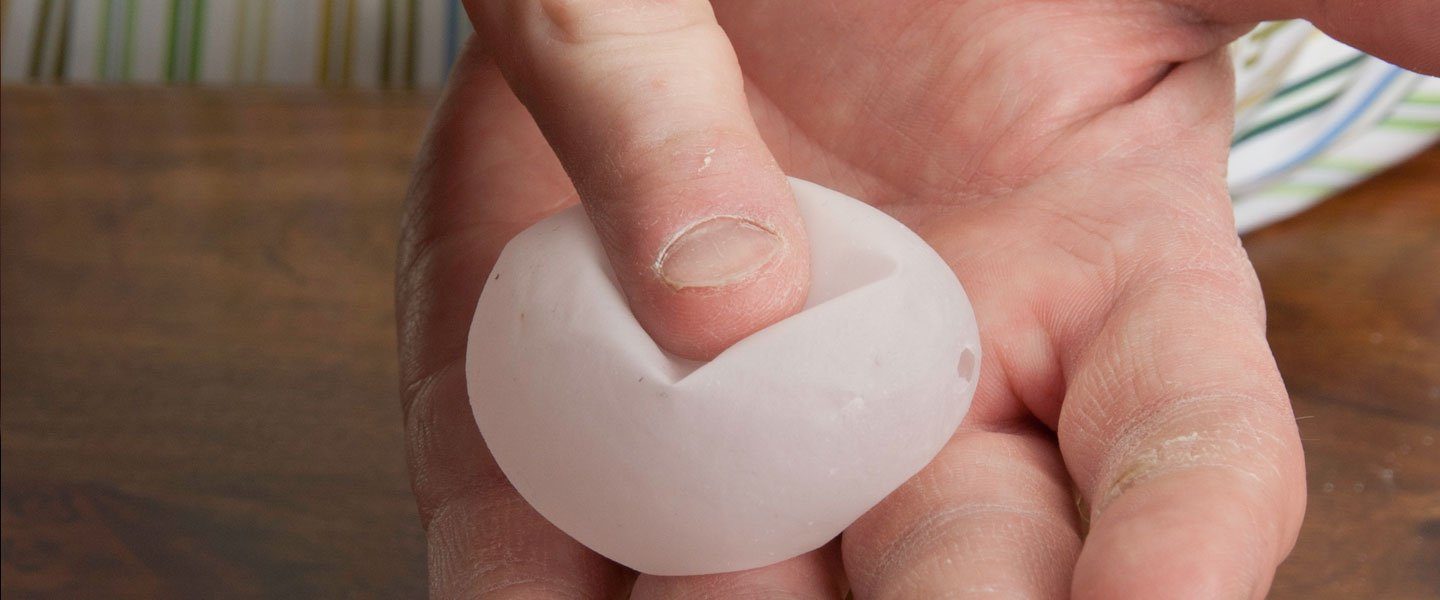
Just imagine the look on your friends’ faces when you show them an egg and then proceed to fold it in half several times until it forms a small white ball! Wait, it gets better. Just bounce the “folded egg” between your hands and the egg reappears!
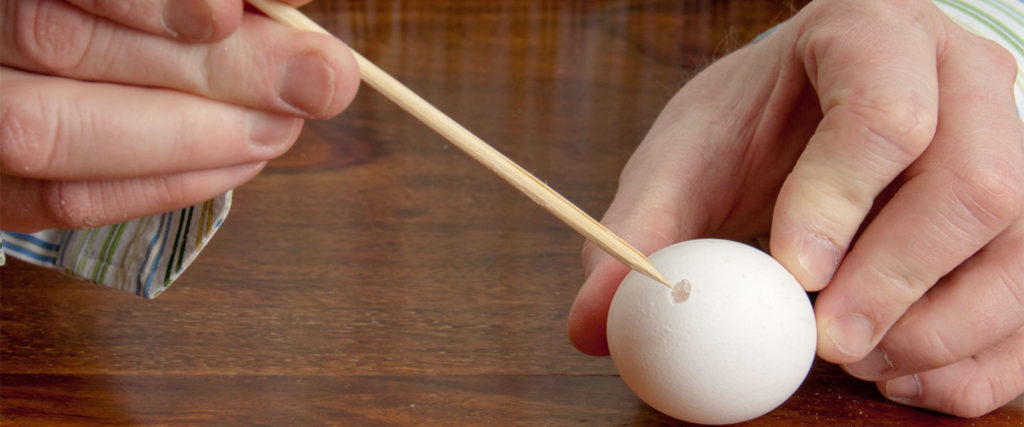
The first step is the trickiest and requires a little practice. You’ll need to blow out the inside of the egg without causing too much visible damage. With the help of an adult, use a sharp pin, a thumbtack, or the tip of a sharp knife to poke a small hole in both ends of the egg. You can also use a small drill to make the holes in the egg. The hole should be about   inch in diameter. Don’t be frustrated if you crack a few eggs before you get the hang of it.
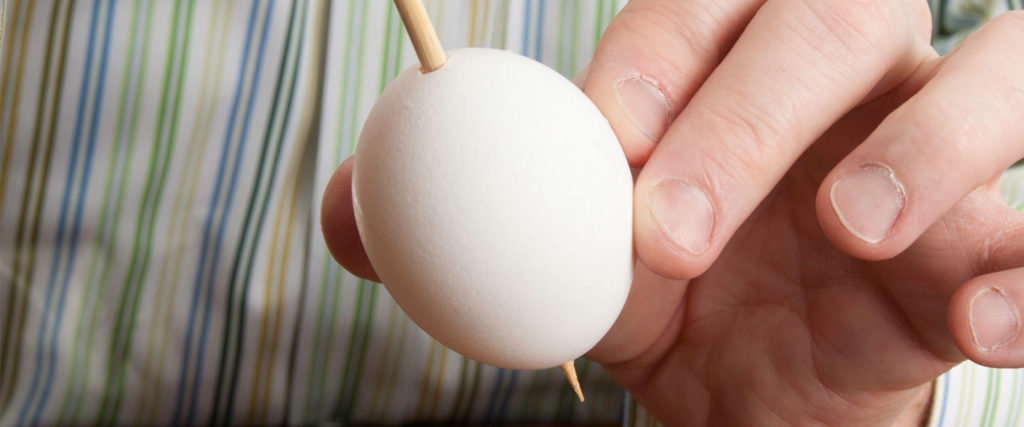
The next step is to scramble the inside of the egg in order to break the yellow yolk. The best way to break the yolk is to poke a toothpick or something similar (like a plastic coffee stirrer) through the hole and to poke around carefully inside the egg.
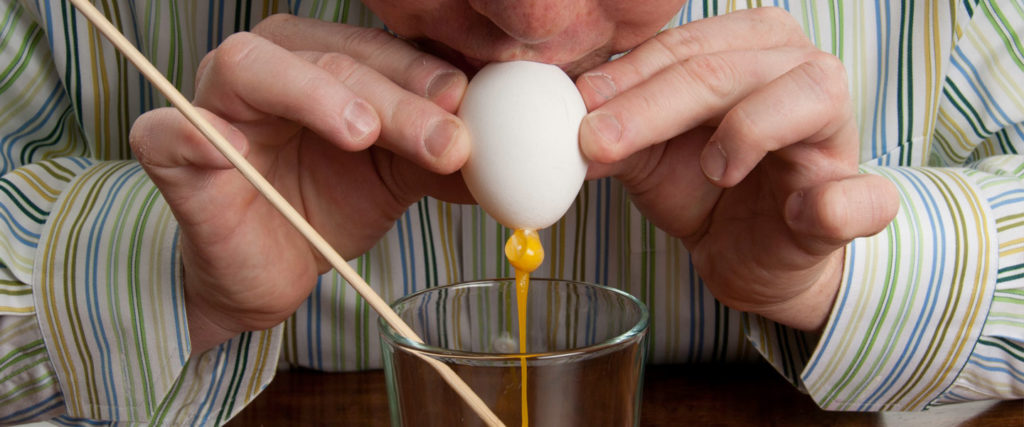
Once the yolk is broken and the egg is “scrambled,” it’s time to blow all of the liquid out of the egg. One method is to clean off one end of the egg with a moist towelette, cover the hole with your mouth, and blow the egg liquid out of the other hole. Of course, it’s best to hold the egg over the sink as you’re doing this. People who are concerned about using their mouths may choose not to try the activity.
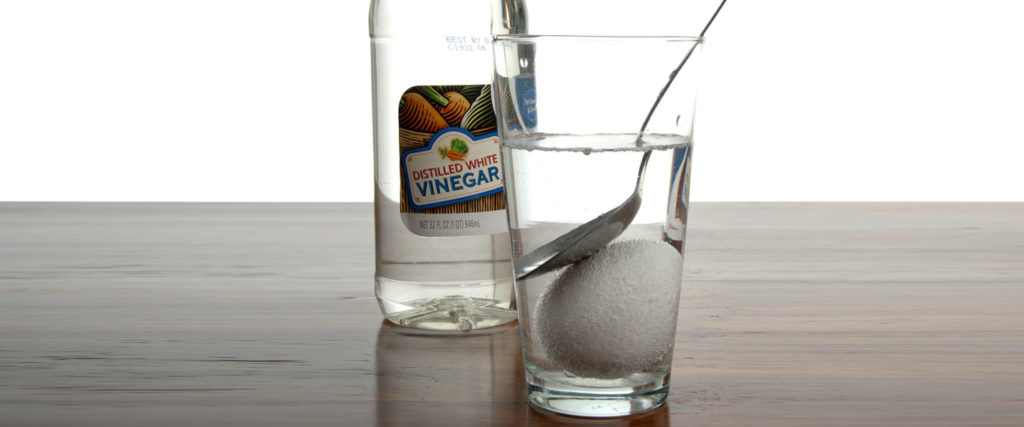
Place the hollow egg in a tall glass or jar and cover the egg with vinegar. You want the egg to be completely submerged in the vinegar, which means that you may need to place something like a large spoon on top of the egg to push it down. You can also try filling the inside of the egg with vinegar to weigh it down.
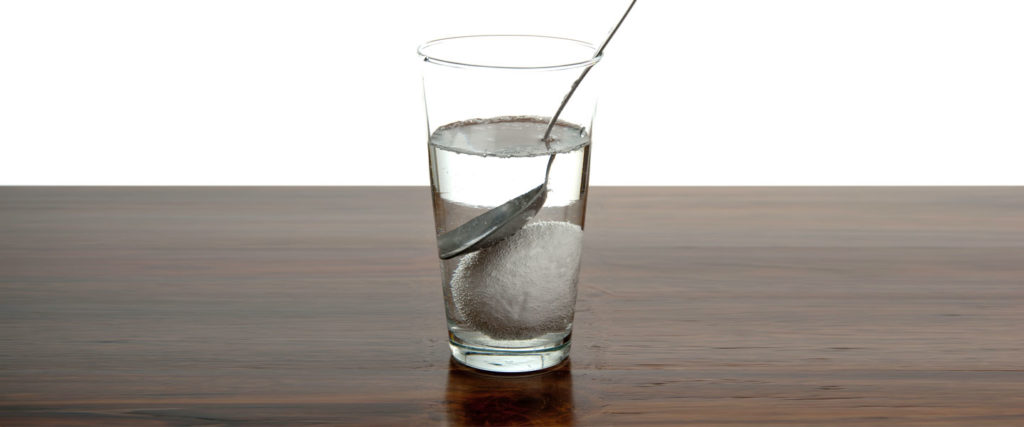
Leave the egg in the vinegar for a full 24 hours.
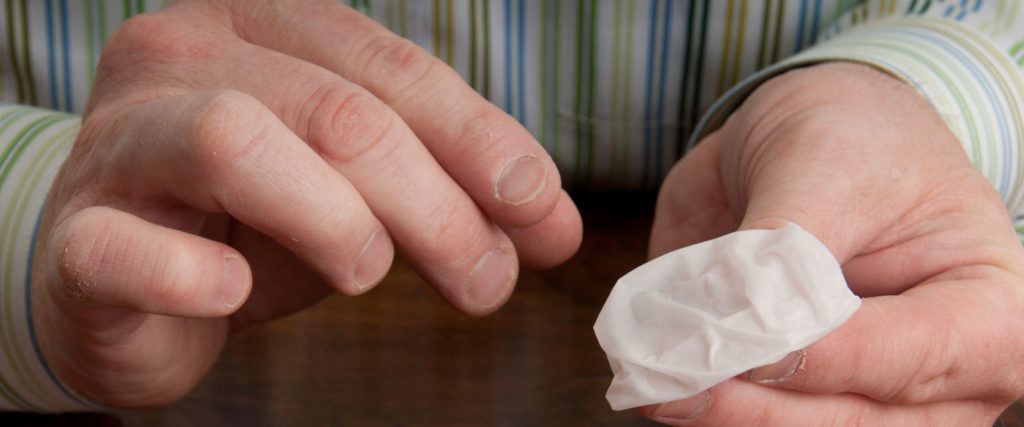
Change the vinegar on the second day. Carefully pour the old vinegar down the drain and cover the egg with fresh vinegar. Place the glass with the vinegar and egg in a safe place for up to 10 days or until all of the shell has dissolved. Some eggshells will take longer to dissolve than others because every egg is unique. For the first few days, bubbles of carbon dioxide (CO2) gas will form on the shell. The vinegar is dissolving the calcium carbonate in the shell and producing bubbles of CO2 at the same time. When the bubbles stop forming, it’s a good indication that the eggshell has completely dissolved.
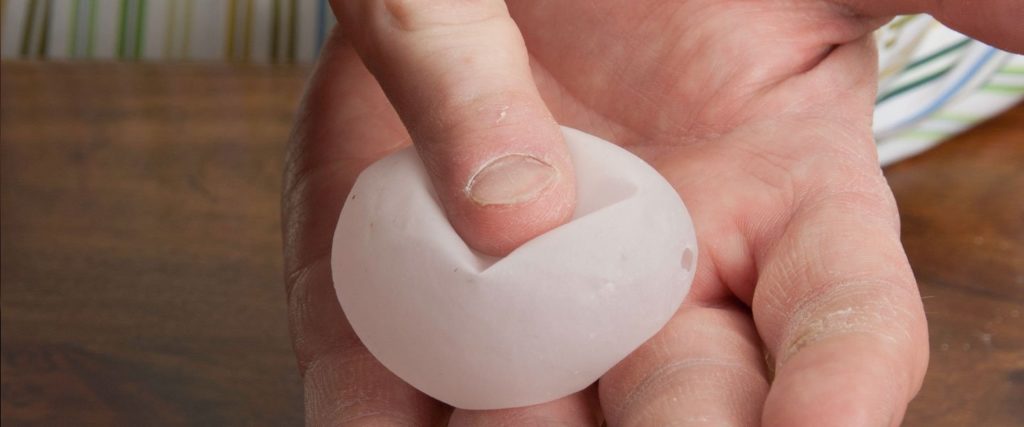
Once the bubbles have stopped forming (again, this could take up to 10 days so be patient!) pour off the vinegar and carefully rinse the egg membrane with water.
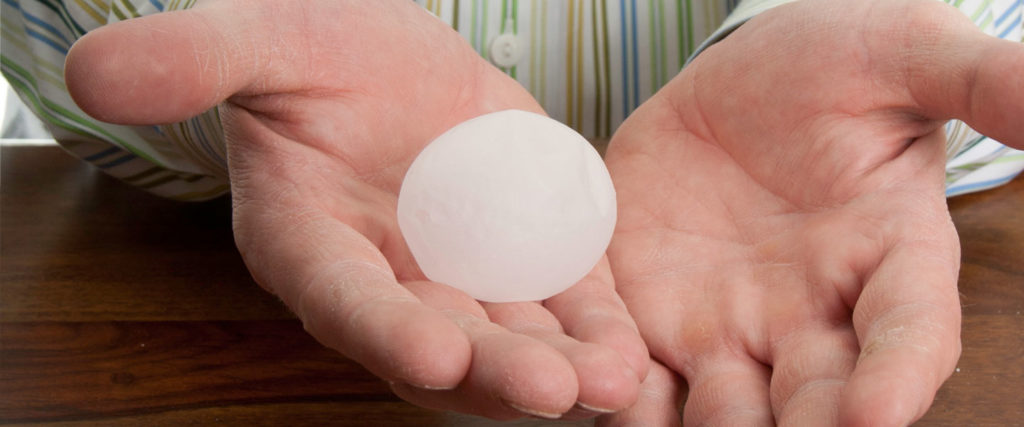
Carefully squeeze out all of the water from inside the egg membrane. Gently blow a little air into one end of the egg and the egg will puff up. Hey, it looks like a real egg! Slowly squeeze the egg in your hand and it will look like you crushed the egg. Carefully toss and bounce the “folded egg” in your hands to magically restore its shape.
There’s both an art and science to making a good folding egg. It just takes practice and patience until you get a membrane that really works. The more you toss the membrane between your hands, the more the water evaporates from the membrane, air gets pushed into the membrane, and it begins to take on the shape of a real egg.
As you already know from the Naked Egg experiment, the acetic acid in the vinegar breaks down the calcium carbonate in the eggshell, and the bubbles that form on the surface of the egg are CO2. Eventually the hard shell of the egg disappears entirely and all that remains is the egg membrane. Because you have already blown out the contents of the egg, the membrane is just full of air. You can fold it up and the air will sneak out the tiny hole in the membrane that you used to blow the yolk out of the egg. The membrane will compress down into practically nothing. As you gently toss around and bounce the “folded egg” on your hand, the air will reenter the membrane, expanding back into its original shape and volume.
Dust the almost dry egg membrane with some baby powder (sometimes called talcum powder). Try to get some of the powder inside the egg as well. The powder helps keep the egg membrane from drying out and cracking, and it makes the egg look even more real.
WARNING! IMPORTANT SAFETY RULES
Always wash your hands well with soap and water after handling raw eggs. Some raw eggs contain salmonella bacteria that can make you really sick!